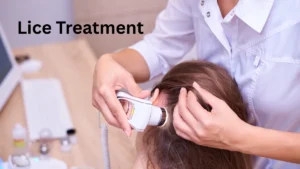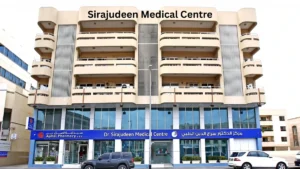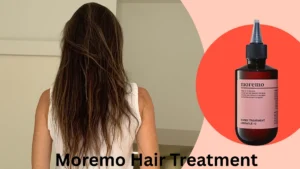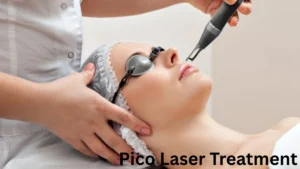Lice infestations, medically known as pediculosis capitis, continue to affect millions of people worldwide, especially school-aged children. Despite improved hygiene awareness, lice outbreaks are common and require prompt, effective treatment to prevent discomfort, social stigma, and reinfestation. This guide covers everything you need to know about lice treatment in 2025, from symptoms to the latest market solutions.
What Are Head Lice?
Head lice are tiny, parasitic insects that live on the scalp and feed on human blood. They spread through direct head-to-head contact and occasionally through shared items like hats, brushes, or bedding. Lice cannot jump or fly, making close physical proximity the primary mode of transmission.
- Lifecycle: Egg (nit) → nymph → adult louse
- Size: Adults are about the size of a sesame seed
- Lifespan: 30 days on the scalp, lay up to 10 eggs per day
Signs and Symptoms of Lice Infestation
Detecting lice early is crucial for effective treatment. Common signs include:
- Intense itching, especially behind the ears and at the nape of the neck
- A crawling sensation on the scalp
- Presence of nits (white/yellow eggs) close to the scalp
- Red bumps or sores caused by scratching
Read more: Facial Treatment: The Ultimate Guide to Glowing, Healthy Skin
Types of Lice Treatments
A. Over-the-Counter (OTC) Treatments
These are widely available at pharmacies and are typically the first line of defense:
- Permethrin Lotion (1%): FDA-approved and safe for children over 2 months.
- Pyrethrins with Piperonyl Butoxide: Natural extracts from chrysanthemums; effective but may require repeat applications.
B. Prescription Medications
For stubborn infestations or resistant lice, prescription treatments are recommended:
- Ivermectin (Sklice): Kills lice without needing to comb out nits.
- Malathion (Ovide): Strong insecticide, flammable, not for young children.
- Spinosad (Natroba): High success rate, safe for children over 6 months.
C. Natural Remedies
Some parents prefer chemical-free alternatives:
- Tea Tree Oil & Neem Oil: Natural insecticides but may cause allergic reactions.
- Mayonnaise or Petroleum Jelly: Aim to suffocate lice, but effectiveness is not scientifically proven.
Wet-Combing Method
A popular chemical-free technique:
- Apply conditioner on wet hair
- Use a fine-toothed lice comb to remove lice and nits
- Repeat every 3–4 days for 2 weeks
Best suited for children under 2 and individuals with sensitive skin.
How to Use Lice Treatments Effectively
Follow these best practices for successful treatment:
- Read all instructions carefully
- Apply the product for the recommended duration
- Rinse thoroughly and use a lice comb to remove dead lice/nits
- Repeat treatment after 7–10 days (if needed)
- Avoid mixing multiple treatments simultaneously
Read more: Cetaphil Gentle Skin Cleanser: Benefits, Ingredients & Uses
Environmental Cleaning After Treatment
Lice don’t survive long off the human body, but cleaning is essential:
- Wash bedding, clothes, and stuffed animals in hot water
- Dry on high heat
- Vacuum carpets, couches, and car seats
- Seal unwashable items in plastic bags for 2 weeks
When to Seek Professional Help
- Lice persist after multiple treatments
- Scalp becomes infected or severely irritated
- You’re unsure about which treatment is safest (e.g., for infants or pregnant women)
Visit a pediatrician or dermatologist for expert guidance.
Read more: Acanthosis Nigricans Treatment (2025 Guide): Causes, Diagnosis & Effective Skin Remedies
Lice Prevention Tips
Prevention is better than cure:
- Avoid head-to-head contact during play or sports
- Don’t share personal items like combs or hats
- Do regular head checks, especially after sleepovers or camps
Lice Treatment Costs (India, UAE, USA)
| Region | OTC Treatments | Prescription | Salon Clinics |
|---|---|---|---|
| India | ₹60 – ₹300 | ₹200 – ₹800 | ₹1,000 – ₹5,000 |
| UAE | AED 30 – AED 120 | AED 100 – AED 300 | AED 250 – AED 1000 |
| USA | $10 – $30 | $50 – $200 | $100 – $300+ |
Note: Prices vary depending on brand, severity, and location.
Global Head Lice Treatment Market Overview
The global head lice treatment market was valued at USD 334.2 million in 2023 and is expected to reach USD 513.4 million by 2033, growing at a CAGR of 4.4%.
- Growth Drivers: Rising awareness, product innovation, increased lice resistance
- Top Regions: North America, Europe, Asia-Pacific
- Leading Players: Sanofi, Johnson & Johnson, Prestige Consumer Healthcare
FAQs About Lice Treatment
Q1: Can adults get head lice?
Yes, though it’s more common in children, adults can also get lice through close contact.
Q2: How long do lice treatments take to work?
Many work within 1–2 applications, but full removal of nits may take longer.
Q3: Can lice live on pets?
No, lice are human-specific parasites.
Q4: What if lice keep coming back?
Reinfestation is likely from untreated contacts or improper application. Follow up with a doctor.
Q5: Are lice dangerous?
They don’t transmit diseases but cause discomfort and potential skin infections from scratching.
Conclusion
Lice treatment in 2025 offers more options than ever—from classic combing methods to prescription solutions. Timely action, proper application, and preventive steps are crucial to eliminating lice effectively. If you’re struggling to get rid of lice, consult a medical professional or licensed treatment clinic near you.





